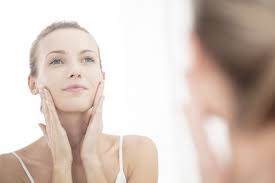Retinoid is a vitamin A derivative. As a constituent of beauty products, it’s enormously valued by the manufacturers mainly because of its beneficial action delivered to skin. What is retinoid ready to offer and does it trigger any adverse reactions? How to apply cream with retinoid?
Retinoid – Medicinal and beauty properties
Retinoid controls growth and is responsible for differentiation and regeneration of epithelial tissues. Moreover, it’s connected with correct night vision, slows down secretion of pituitary gland hormone (THS) and reduces tissue sensitivity to thyroid hormone (T4). For that reason, retinoid is used to prevent and fill the shortage of vitamin A as well as heal skin diseases including psoriasis, acne and fish scale disease. Additionally, it’s used to treat chronic inflammation of the airways and gastrointestinal tract as well as various ophthalmic diseases and ailments such as dry eye syndrome, eyeball prickling and irritation. When combined with antibiotics, retinoid aids to heal thermal, radiation-induced and other similar skin damages.
Retinoid – Application in cosmetics
Retinoid reduces wrinkles
At the beginning of using cosmetics with retinoid, only the superficial layers of epidermis are affected. Consequently, within a few weeks skin starts looking younger. It’s owed to the gentle action of retinoid that delicately exfoliates and normalizes skin. This results in reducing the damaged and calloused skin layer.
Later, retinoid starts affecting deeper skin layers, which means that it increases both the number of fibroblasts as well as collagen and elastin production. As a result, after a few months skin becomes more supple and firm, fine lines vanish, wrinkles are significantly reduced.
Retinoid improves skin tone
Retinoid regulates epidermal exfoliation and skin self-regenerating processes, it reduces the size of melanocytes (cells that produce skin pigments) along with the amount of melanin, which consequently reduces discolourations. Moreover, retinoid contributes to creating new capillaries in skin, which nourishes and supplies connective tissue and epidermis with oxygen. Thanks to this, skin wins pretty and fresh-looking tone.
Retinoid takes care of oily skin
Cosmetics containing retinol are used to condition acne-prone, oily skin type. This ability to deal with oily skin is owed to the skin normalizing action of retinol (regulates sebum production, unclogs and shrinks skin pores). Moreover, it exhibits the tendency to reduce blackheads and eczema.
How to apply creams with retinoids?
Retinoid is very sensitive to light and temperature, therefore it must be used properly. Firstly, the packaging which the cosmetic is stored in must provide chemical stability, which means that it shouldn’t be transparent. Therefore, if the producer didn’t take care of it, the cosmetic must be kept away from the sources of light.
Secondly, the concentration of the retinoid used in a cosmetic should be appropriate, which means that it shouldn’t be lower than 0.25% or higher than 1%. Additionally, it’s better to apply cream with retinoids at bedtime, especially in the first stage of the treatment when retinoids mainly affect epidermal layer and increase its sensitivity to solar radiation. However, throughout a day a high sun protection is needed, at least SPF 30.
Although retinoid might cause temporary skin dryness, it shouldn’t be used together with moisturising cosmetics. With time retinoid starts managing skin hydration because it stimulates hyaluronic acid production.
Retinoids – Side effects
Application of big vitamin A doses throughout longer periods leads to hypervitaminosis A that can be recognized by constant fatigue and sleepiness, gastrointestinal disorders, loss of appetite, vomiting, hepatosplenomegaly (enlargement of liver and spleen), hepatitis and leukopenia, migraine and excessive dryness, exfoliation and cracking of the skin.


















Leave a Reply